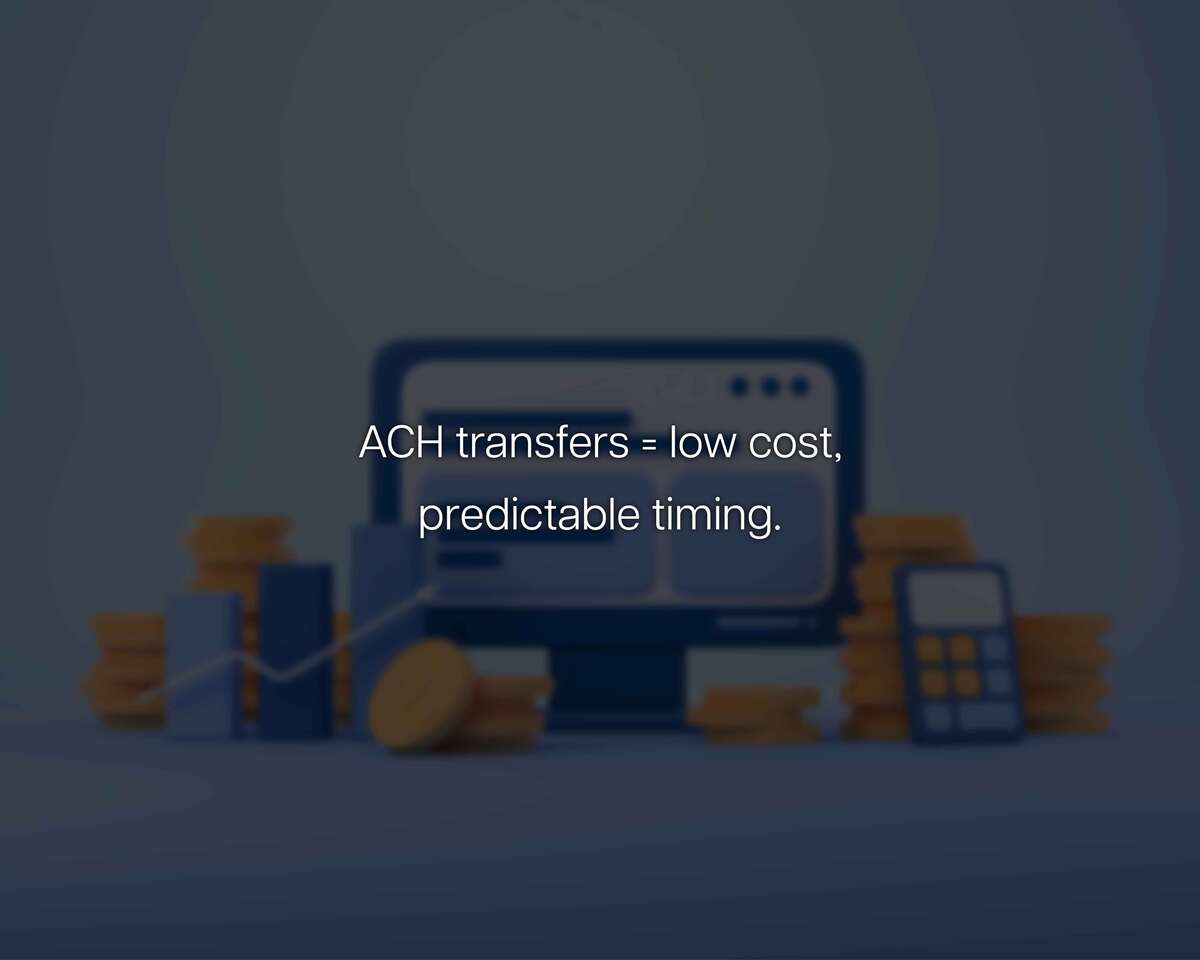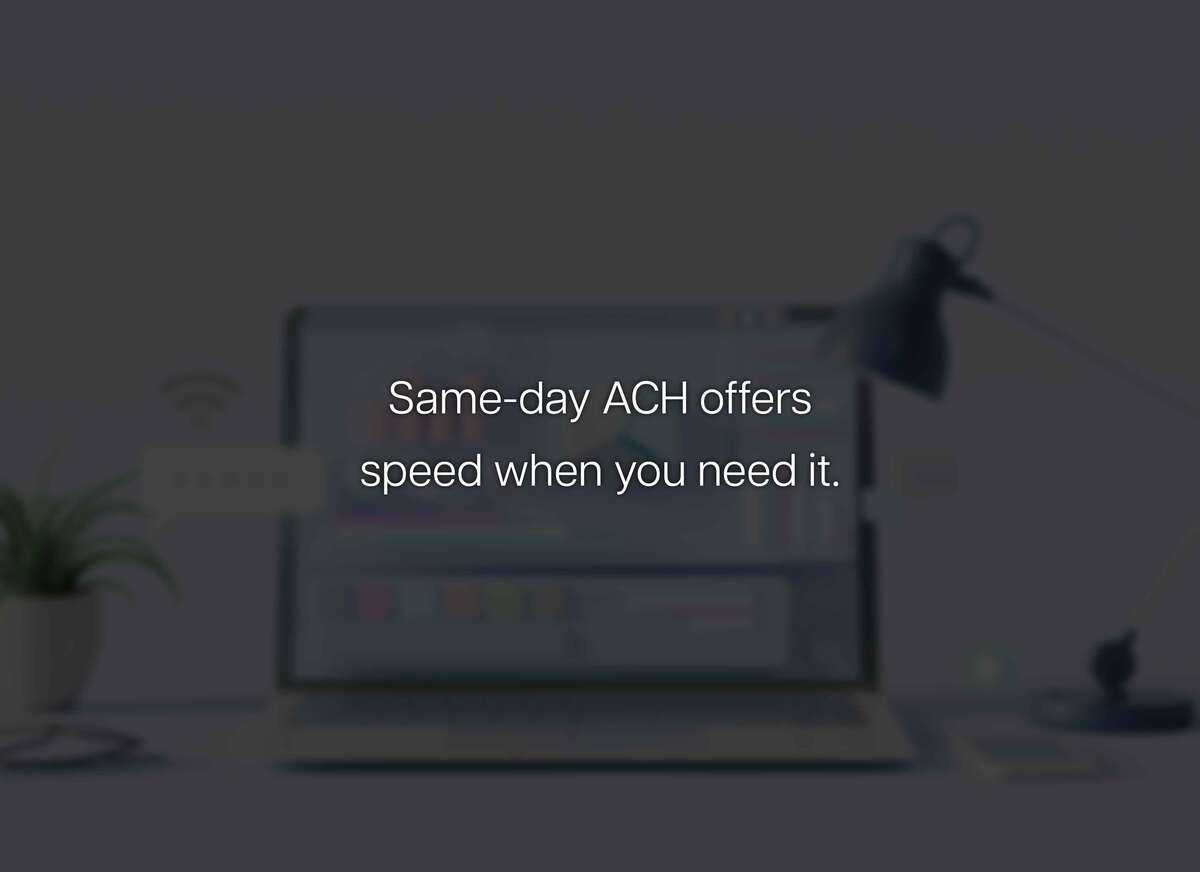How Long Does an ACH Transfer Take and What Affects the Speed?
An ACH transfer provides a secure, low-cost, and predictable method for moving money between accounts. Although not instantaneous, its balance of affordability and automation makes it an essential part of modern business payments. By understanding the factors that affect timing, companies can manage transactions more effectively and ensure smoother financial operations.

No hidden fees. Ever.
Real-time accounting
SOC 1 & SOC 2 compliance
Expert human support

Table of Contents
Understanding ACH Transfer Timing
An ACH transfer typically takes one to three business days to complete. The timing depends on when the transaction is submitted, the policies of the involved banks, and whether it qualifies for same-day processing. Because ACH payments are processed in batches rather than in real time, there is a delay between initiation and settlement.
For most businesses, this timeframe provides a balance between cost-efficiency and reliability. The ACH network remains one of the most widely used systems for recurring payments, payroll deposits, and vendor transactions.

Why ACH Transfers Are Not Instant
Unlike wire transfers, which move funds immediately through real-time communication between banks, ACH transfers use a batch-based system. Transactions are collected by the bank throughout the day and submitted to the Automated Clearing House operator at scheduled intervals. The operator sorts and forwards them to the receiving financial institutions for settlement.
This multi-step process introduces a short delay but significantly reduces transaction fees. It’s one reason ACH remains the preferred method for non-urgent business payments.
Types of ACH Transfers
The ACH network handles two main types of transfers: credits and debits. Each has a slightly different processing timeline.
- ACH Credit: Initiated by the payer to push funds to another account. These transactions, such as payroll deposits or supplier payments, typically clear in one to two business days.
- ACH Debit: Initiated by the payee to pull funds from another account. These transactions, like subscription billing or utility payments, usually settle within one to three business days.
Understanding which type of transfer your business uses can help predict settlement timing and plan cash flow more accurately.
The Role of Same-Day ACH
Same-day ACH was introduced to accelerate payments within the existing network framework. It allows transactions submitted before designated cutoff times to settle on the same business day. However, eligibility depends on the bank’s participation and transaction type.
Most financial institutions now support same-day processing for payroll, business-to-business payments, and consumer transactions. While same-day ACH carries slightly higher fees, it provides valuable flexibility for time-sensitive payments.

Factors That Affect Processing Speed
Several variables influence how long an ACH transfer takes from initiation to completion.
- Submission Time: Transfers submitted after the bank’s cutoff time are processed on the next business day.
- Weekends and Holidays: ACH operations pause during non-business days, delaying settlement until the next working day.
- Bank Policies: Some banks process multiple batches daily, while others run fewer cycles.
- Verification Requirements: First-time transactions may require additional account validation, extending processing time.
- Transfer Type: Credits often move faster than debits since they originate directly from the payer.
Recognizing these factors helps businesses plan payment schedules and avoid disruptions in cash flow.

ACH Transfers vs. Wire Transfers
While both ACH and wire transfers move funds between bank accounts, their timing and costs differ. Wire transfers are processed individually and usually complete within hours, but they can cost anywhere from $15 to $50 per transaction.
In contrast, ACH transfers are far less expensive, generally costing less than $1 per payment. The trade-off is a slightly longer processing window. For routine business transactions, ACH remains the more practical choice due to its cost savings and automation capabilities.
Managing Business Cash Flow with ACH
Businesses that rely on ACH transfers can improve cash flow by strategically scheduling payments. For example, sending supplier payments early in the day or before weekends helps reduce delays. Automating recurring ACH payments ensures consistency and prevents missed due dates.
Using forecasting tools to align cash inflows and outflows based on ACH settlement patterns also enhances financial stability. These small adjustments make a measurable difference in operational efficiency.
Security and Reliability of ACH Transfers
ACH transfers are highly secure due to encryption, authentication, and oversight by the National Automated Clearing House Association (NACHA). Each transaction follows strict compliance standards to prevent unauthorized access and fraudulent activity.
Banks and processors also implement internal verification procedures to confirm account ownership and available funds before approving transactions. This system of checks ensures reliability across millions of daily payments.
How to Track ACH Transfer Status
Businesses can track pending ACH transfers through their banking dashboards or transaction management software. Most systems show key milestones, such as when a payment is initiated, processed, or settled.
If a transfer appears delayed, reviewing the submission time and ensuring correct routing details can resolve most issues. Errors in account numbers or insufficient funds are common causes of reversals or extended processing times.
The Business Case for Using ACH
For recurring payments like payroll, rent, and vendor settlements, ACH transfers are both cost-effective and predictable. Companies that handle large transaction volumes benefit from automation, which reduces manual effort and eliminates paper-based delays.
While same-day ACH offers faster turnaround, standard processing remains efficient for most scheduled payments. To better understand the timing and settlement structure of an ACH transfer, reviewing network guidelines and banking policies helps determine which options fit best for your business operations.
Final Thoughts
An ACH transfer provides a secure, low-cost, and predictable method for moving money between accounts. Although not instantaneous, its balance of affordability and automation makes it an essential part of modern business payments. By understanding the factors that affect timing, companies can manage transactions more effectively and ensure smoother financial operations.
Supercharge your Payments
RevitPay is here to help you scale smarter — from your 1st transaction to your 100,000th.
Previous
Next
Frequently Asked Questions
Recent Articles
A Seamless Start to Smarter Payment Processing
Request an Application
Submit for Approval
Start Processing
Explore More Online Payment Solutions
Everything you need to process payments wherever, whenever.
Seamless & Secure Payment Processing
Payment Methods That Power High Risk Businesses
We offer a wide range of secure, flexible payment methods tailored to the needs of high risk merchants. From credit card processing and mobile payments to ACH, eCheck, and more, our solutions are built to help your business accept payments confidently.
Credit Cards
Fast, familiar, and essential.
Give your customers the convenience of paying by credit card while maintaining the fraud protection and flexibility high risk merchants need.
Mobile Payments
Payments on the go.
Whether in-store or remote, accept transactions via smartphones and tablets, keeping your business agile and responsive.
Bitcoin & Crypto Payments
Stay ahead of the curve.
Expand your payment options to bypass traditional banking barriers and get paid faster—with global reach and fewer limitations.
MOTO Payments
Mail and telephone orders made easy.
Process card-not-present transactions securely with MOTO functionality, ideal for businesses that take payments by phone or through manual orders.
ACH Payments
Lower fees, higher reliability.
Automated Clearing House (ACH) payments are perfect for recurring billing or high-ticket items, offering a secure, bank-to-bank alternative to cards.
eCheck Payments
Modernize check payments.
Accept digital checks with ease, streamlining your processing while reducing risk and delays often associated with traditional paper checks.
Seamless Continuity Billing for Subscription-Based Businesses
Looking to support subscription models? Our Continuity Subscriptions solution offers automated recurring billing, built-in autobill features, and reduced payment churn—perfect for businesses that rely on predictable revenue.

Find the Right Way to Get Paid
Whether you’re running an online store, accepting payments remotely, or operating in a high risk space, RevitPay gives you the tools to process transactions with confidence and ease.
A Seamless Start to Smarter Payment Processing
Request an Application
Submit for Approval
Start Processing
Ready to get started?
Join businesses who are saving thousands each year with RevitPay.



%20and%20How%20Does%20It%20Impact%20Online%20Security.jpg)
